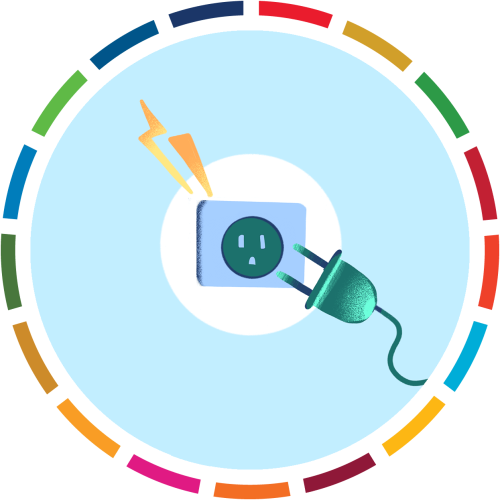The Sustainable Lab Initiative is a group of students, scientific collaborators, and professors, as well as the TU Sustainability Office. We meet digitally every one to two months to discuss how we can operate the laboratories at the Department of Chemistry more sustainably. Everyone is welcome to get involved! If you are interested in contributing to a more sustainable Department of Chemistry, please contact Nico Bruns (see contact).
Shut the Sash
Not only for your own safety, but also for the sake of the environment, the fume cupboard window should always be closed quickly by hand when work in the fume cupboard is finished or interrupted. Modern fume cupboards are equipped with motion detectors, but they only close automatically after a few minutes.
One of the main energy consumers in laboratories is recirculated air. In our modern laboratories, fume cupboards with adaptive airflow are used. These register their opening status and increase their flow rate to prevent hazardous substances from being released into the room even when the sash is up. The necessary supply air must be heated or air-conditioned and moved accordingly.
In typical modern fume cupboards, the air flow is more than doubled from 200 m³/h to 405 m³/h when the sash is open. This enormous increase shows, that even the few minutes of waiting for a possible automatic closure, very quickly lead to several cubic meters more in air consumption.
Extensive information and further tips on fume cupboards you can find here
Correct handling of cooling equipment
Refrigerators and freezers usually have to run 24 hours a day, 365 days a year. Therefore, every improvement here is will save a lot of energy!
The key points to take care of are:
- Clean & ice-free refrigerators are efficient refrigerators. In particular, seals should be kept ice-free.
- Ultra-low-temperature (ULT) freezers can often also be operated at -70°C instead of -80°C.
- By good sample management, entire units can be switched off under certain circumstances.
- If the outer heat exchangers are blocked, the unit must work against additional resistance. Therefore, good air circulation around the unit should always be possible.
On the Freezer Challenge webpage you can find more background information and studies on these energy efficiency measures.
Reducing unnecessary electricity consumption

Does every drying oven also have to work throughout the nights?
Give your laboratory equipment, computers and monitors a break and switch them off when they are not in use for a longer period of time. It is more economical than stand-by mode if no electricity flows at all.
Correct handling of solvents
All organic solvents must be properly disposed of or recycled when they have done their job. Under no circumstances should they go down the drain. This applies in particular to acetone!
Reduce, Reuse & Recycle
Reduce
The plastic waste is best which has never been produced!
- Where the alternative is given, glassware should be used.
- Bundled orders can reduce packaging waste.
- Disposable containers (such as Eppendorf tubes) should be chosen as small as possible.
Reuse
- Some packaging materials can be reused by traders.
- Empty containers can often be washed and repurposed.
- Some single-use products can also be washed and reused, contrary to their sales name.
Recycle
- Uncontaminated waste (e.g. packaging waste) should be separated and recycled (e.g. via the recycling bin).
- Uncontaminated paper waste (e.g. paper towels and packaging) can also be collected separately and recycled.
- For some laboratory products, such as culture media bottles or pipette tip boxes, there are take-back and therefore recycling programmes.
- It can be worthwhile to decontaminate plastic and return it to the value chain.
Sources
- Chemistryworld: Sustainable lab buildings
- Freezer Challenge
- Baumusterpruefung Nr._404-2_RWI-SF-TA1500 -> 8.4 Prüfung mit variablem Luftstrom
- c&en: Can laboratories move away from single-use plastic






